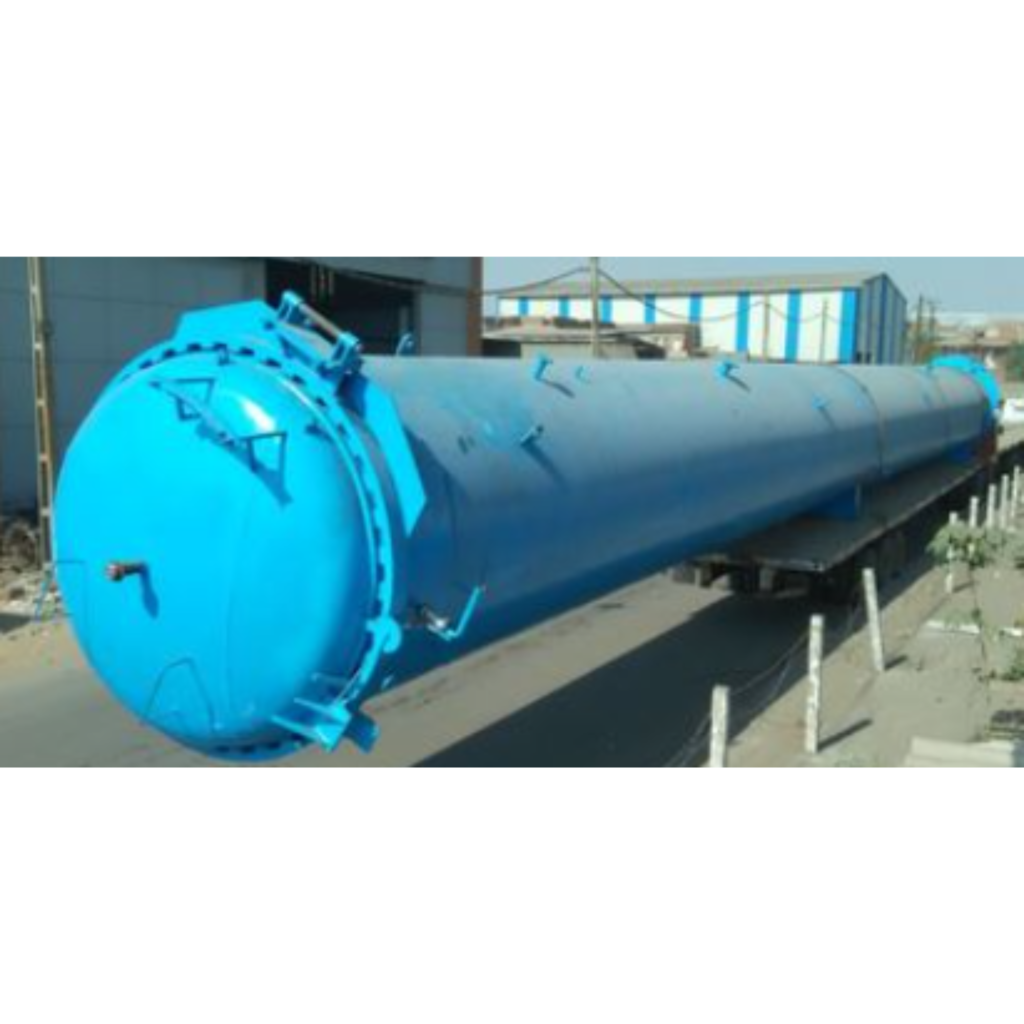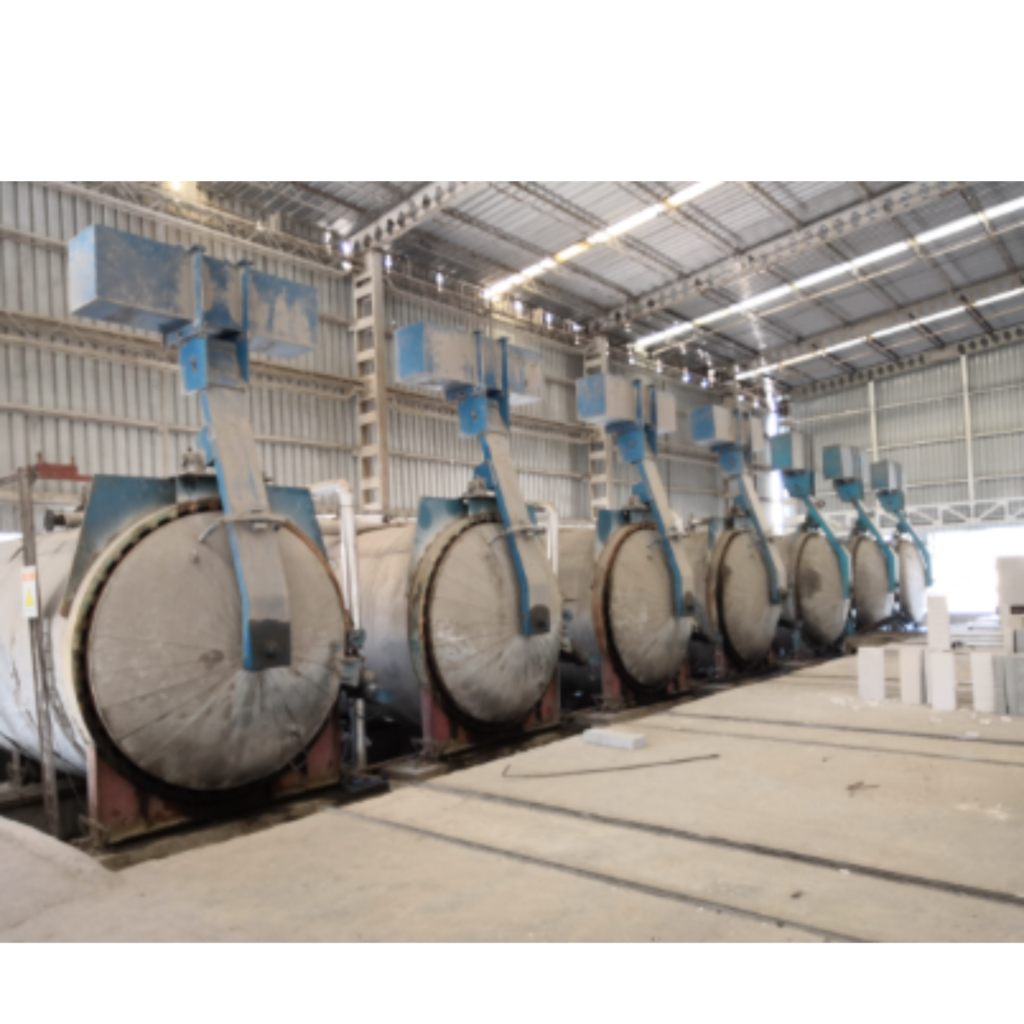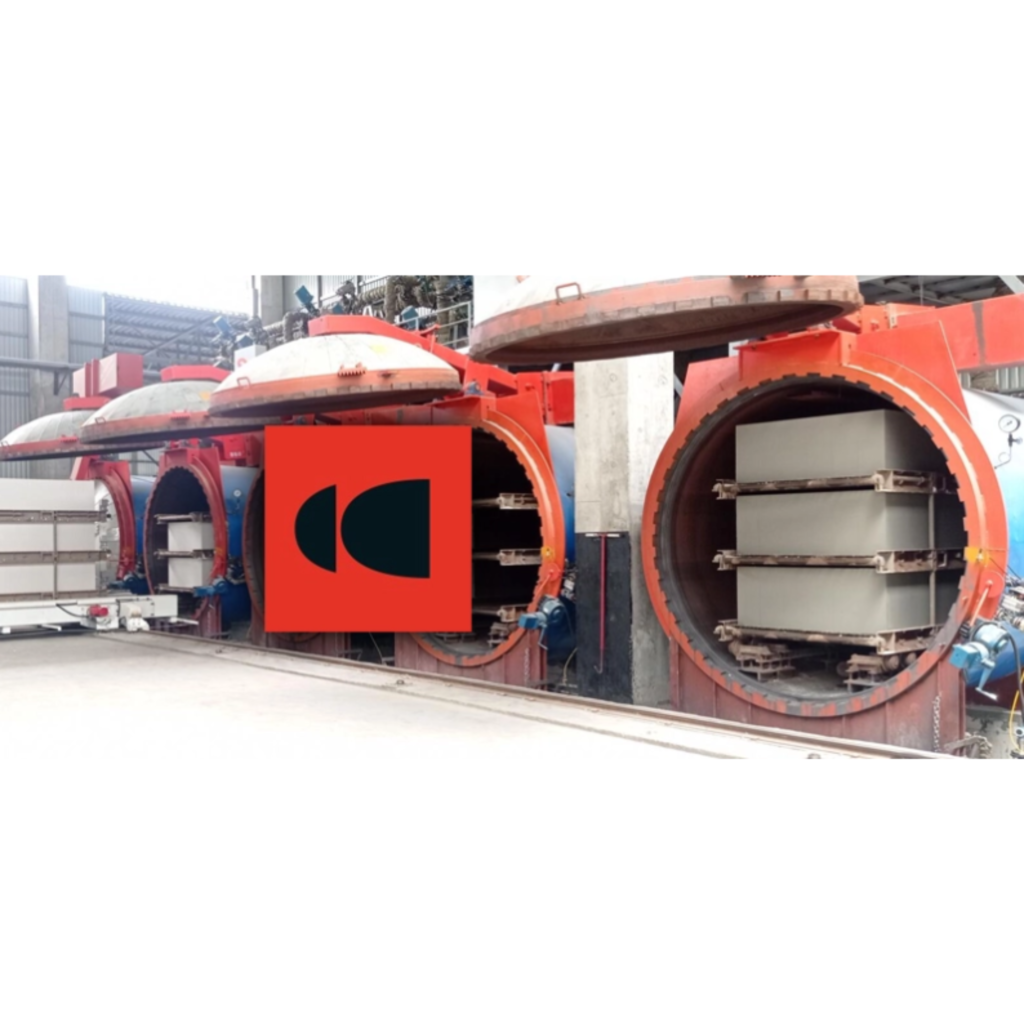From: Textile Technology & Products
autoclave for an AAC plant is a specialized piece of equipment used in the production of Autoclaved Aerated Concrete (AAC).
AAC is a lightweight, precast concrete material that is widely used in construction due to its excellent insulation properties and structural strength.
The working principles of an autoclave for AAC involve the following key aspects:
AAC Production: AAC is made by mixing sand or fly ash, cement, lime, and aluminum powder with water. The aluminum powder reacts with the calcium hydroxide in the mix to produce hydrogen gas, which creates air bubbles in the mixture.
Pouring into Molds: The AAC mixture is poured into molds, where it begins to expand and rise due to the formation of air bubbles.
Curing: After pouring, the AAC blocks, panels, or other products are allowed to cure in a controlled environment for a specified duration. This curing stage is crucial for the development of strength and stability.
Autoclaving: Once the initial curing is complete, the AAC products are placed inside an autoclave. The autoclave is essentially a large pressure vessel that is capable of withstanding high temperatures and pressures.
Steam and Pressure Treatment: Inside the autoclave, the AAC products are subjected to a combination of high-pressure steam and elevated temperatures. This treatment enhances the chemical reactions within the AAC, resulting in the formation of calcium silicate hydrate, which gives the material its strength and lightweight properties.
Cooling: After the autoclaving process, the AAC products are gradually cooled to room temperature. This cooling stage is important for preventing thermal shock and maintaining the integrity of the material.
Quality Control: Throughout the entire process, strict quality control measures are applied to ensure that the AAC products meet the required standards for strength and density.

Advantages:
Lightweight: AAC is a lightweight building material, making it easier to handle and transport.
Insulation Properties: AAC offers excellent thermal insulation, helping to reduce heating and cooling costs in buildings.
Fire Resistance: AAC is highly fire-resistant, enhancing building safety.
Sound Insulation: AAC provides good sound insulation, contributing to a quieter indoor environment.
Eco-Friendly: The production of AAC generates minimal waste and uses sustainable raw materials.
Durability: AAC structures are durable and can have a long lifespan.
Disadvantages:
Initial Cost: AAC products and the equipment, including autoclaves, used in their production can have higher upfront costs compared to traditional building materials.
Installation Skill: Proper installation of AAC products requires skill and expertise to ensure structural integrity.

Applications: AAC products, produced using autoclaves, find applications in various construction projects, including:
Residential buildings
Commercial buildings
Industrial structures
Schools and hospitals
Hotels and resorts
High-rise buildings

Summary:
An Autoclave for an AAC plant is a critical component in the production of Autoclaved Aerated Concrete (AAC).
It involves a process where AAC products are subjected to high-pressure steam and elevated temperatures inside a specialized pressure vessel (the autoclave).
This treatment enhances the material’s strength, lightweight properties, and durability. AAC is widely used in construction due to its advantages in terms of insulation, fire resistance, sound insulation, and sustainability.
While there can be higher initial costs associated with AAC production and installation, its long-term benefits make it an attractive choice for many construction projects.


 Sales & Marketing:
Sales & Marketing:  Service Supports:
Service Supports:  Website:
Website: 